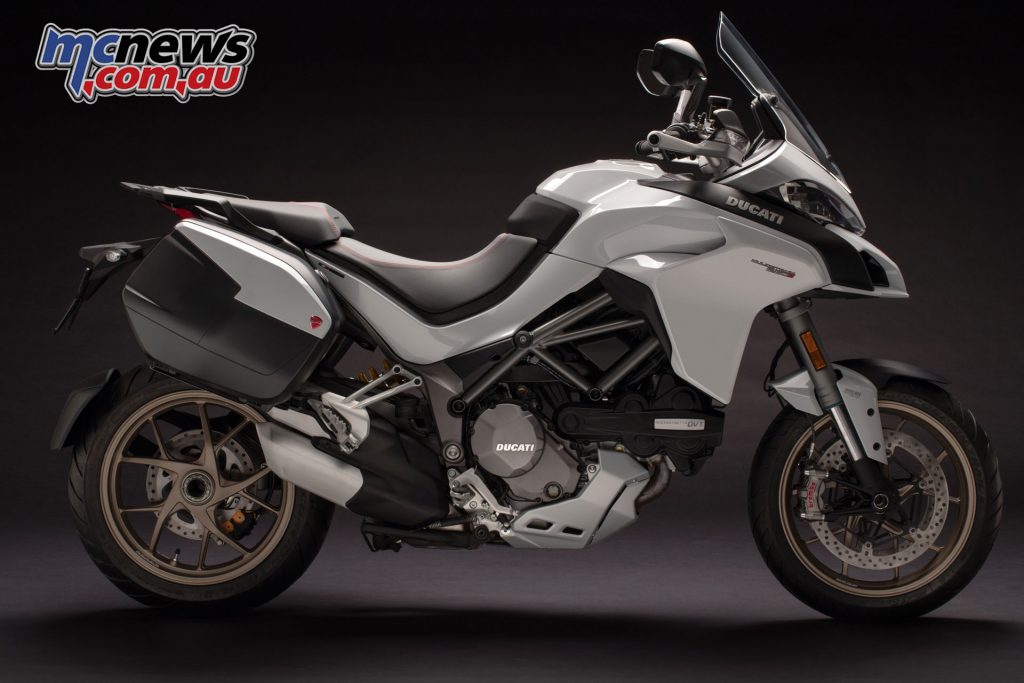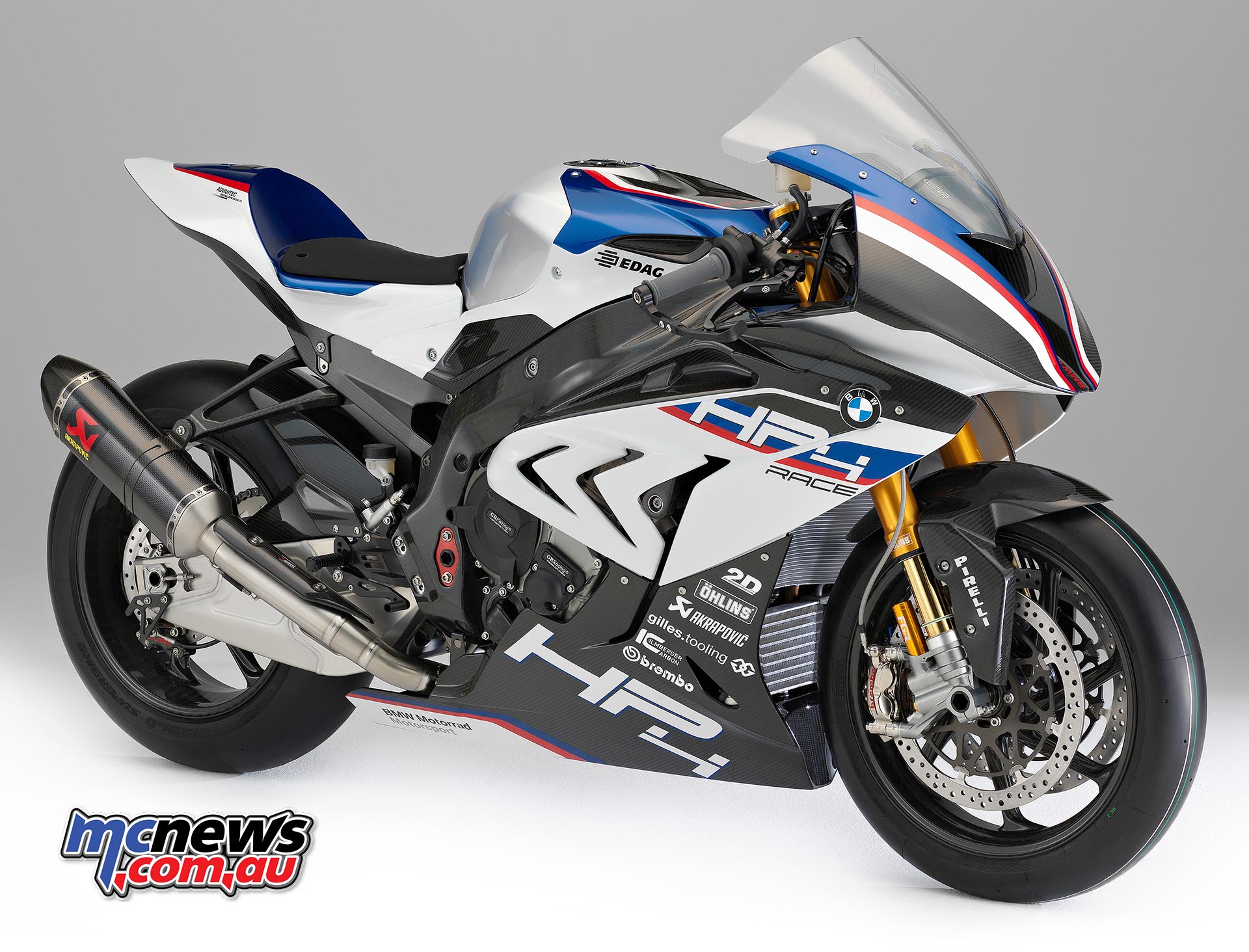2018 Ducati Multistrada 1260 design
The Multistrada 1260 retains the defining traits of the line, with new side fairing panels for a neater, sleeker look. A signature element to the Multistrada 1260 S design are the five Y-spoke wheels, while the rear grab handle was derived from the Multistrada 1200 Enduro, which can now accommodate the Touratech aluminium side panniers offered as an alternative to the plastic panniers (both optional).
Designers also redesigned the underseat profiles for seat height adjustment. They have been resized to be less obvious when installed. Lastly, the Multistrada 1260 gets a new number plate holder and LED rear turn indicators.
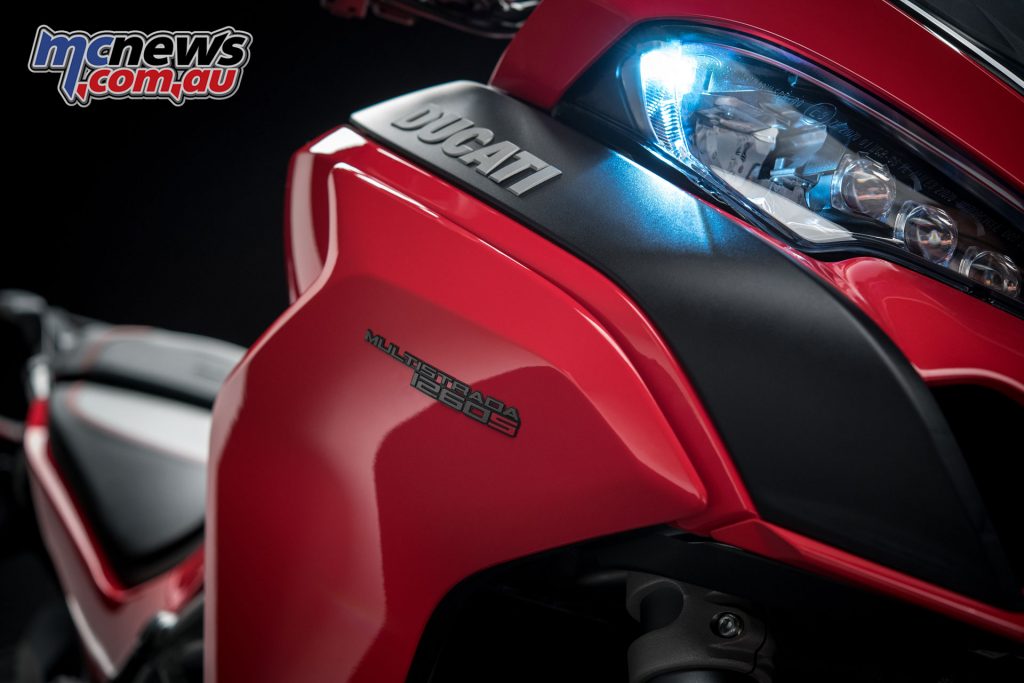
New Ducati Testastretta DVT 1262
By independently varying the timing of the camshaft that controls the intake valves and the camshaft that controls the exhaust valves, the DVT engine (Desmodromic Variable Timing) optimises high-rpm performance to provide maximum power.
At low-to-medium rpm, instead, it smooths operation, making power delivery more fluid and boosting torque. In practice, this is an engine that changes its characteristics continually – unnoticed by the rider – as rpm varies while complying with Euro 4 specifications and giving good fuel economy.
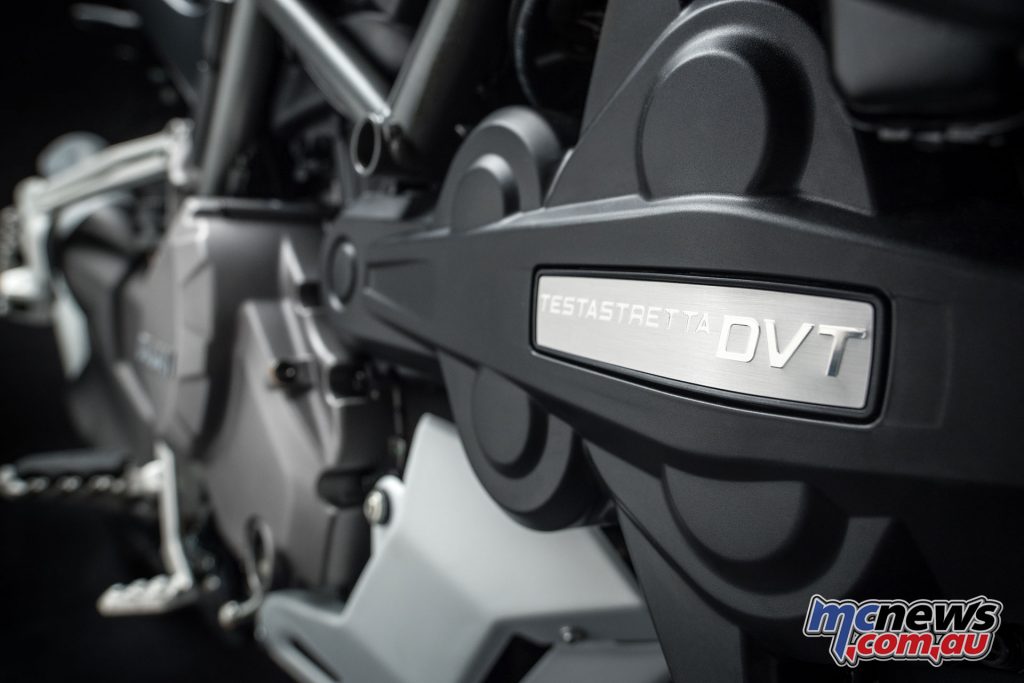
Bigger displacement was achieved by increasing piston stroke from 67.9 to 71.5 mm (bore remains 106 mm). This required new connecting rods, crankshaft and cylinders. The DVT system was recalibrated to maximise low-to-mid range torque delivery, bringing maximum output to 158hp at 9750 rpm and maximum torque to 13.2kgm at 7500 rpm.
The exhaust piping was redesigned, the presilencer received a new inner layout and a new silencer. At the intake end, the air intake mouth was redesigned.
New belt covers feature the DVT logo on a metal support. The generator cover of the Multistrada 1260 engine has been redesigned to accommodate the new, more advance gear sensor which is a core component of the DQS Up & Down. Gear lever linkage has also been changed, it now features a shorter stroke for more accurate engagement.
Both generator and clutch covers are now painted in the new “Mercury Grey” colour. Another new component part is the clutch slave cylinder, with a more compact, integrated design.
Engine tune has been thoroughly revised with a focus on rideability, while torque delivery in each Riding Mode changes according to selected gear. Again for greater ease of riding, engine brake control now responds differently in each individual gear. Cruise control was also recalibrated to give the utmost riding comfort.
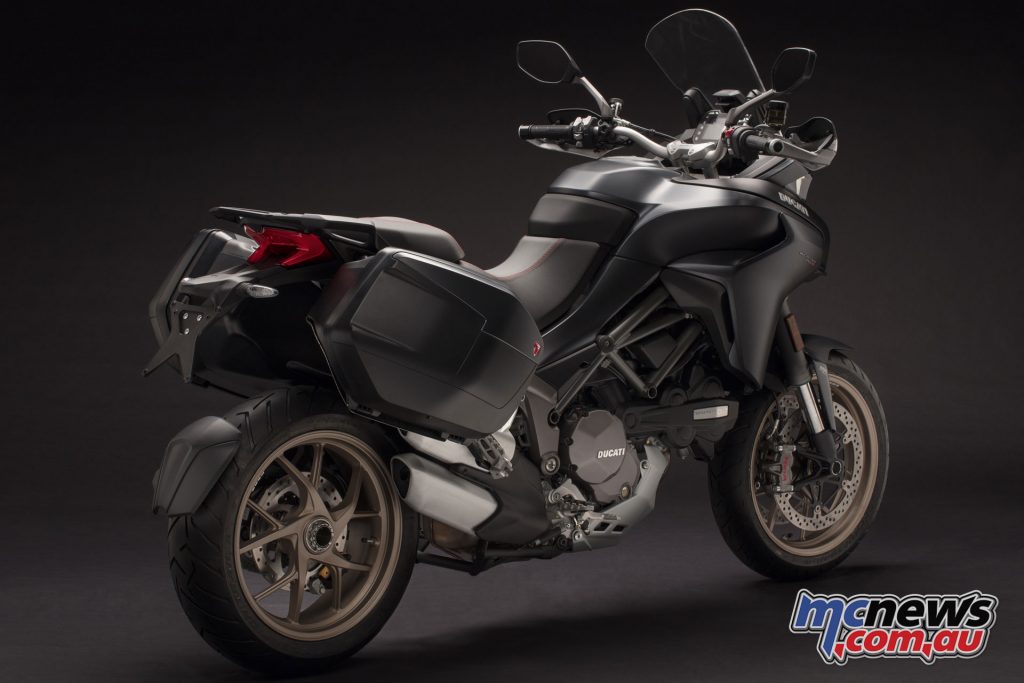
Desmodromic
As might be expected, the Testastretta DVT engine uses the Desmodromic valve actuation system that has made Ducati’s Bologna-built bikes famous worldwide. This special system closes the intake and exhaust valves mechanically, with the same precision as they are opened. The soundness of this system, used on all Ducati models, is demonstrated by its utilisation on Ducati Corse’s Superbikes and MotoGP bikes.
In the Testastretta DVT engine, Desmodromic valve actuation provides a clear advantage over traditional valve springs; at low revs the system requires less force because there are no springs to be compressed. This makes it possible to keep the individual valve timing adjusters compact, which minimises their weight and allows them to be smoothly integrated.
